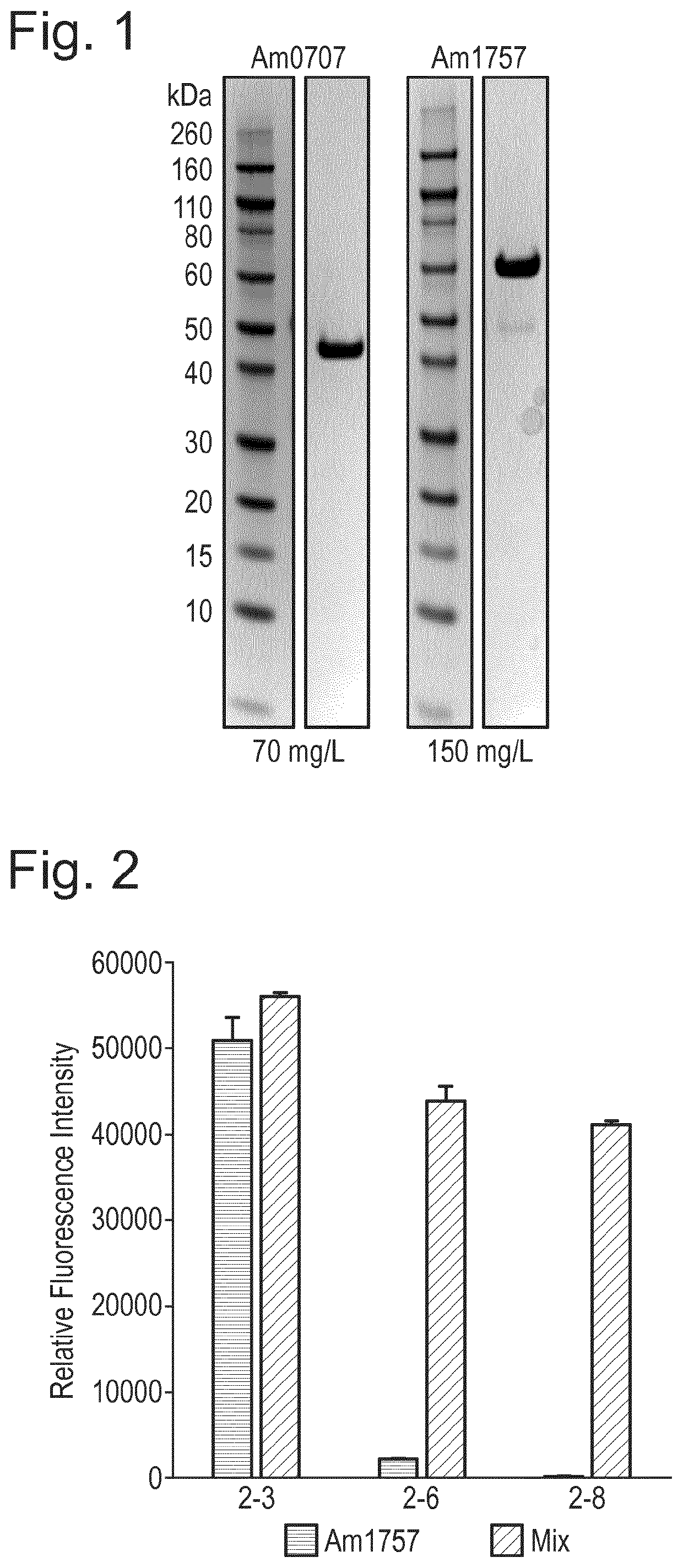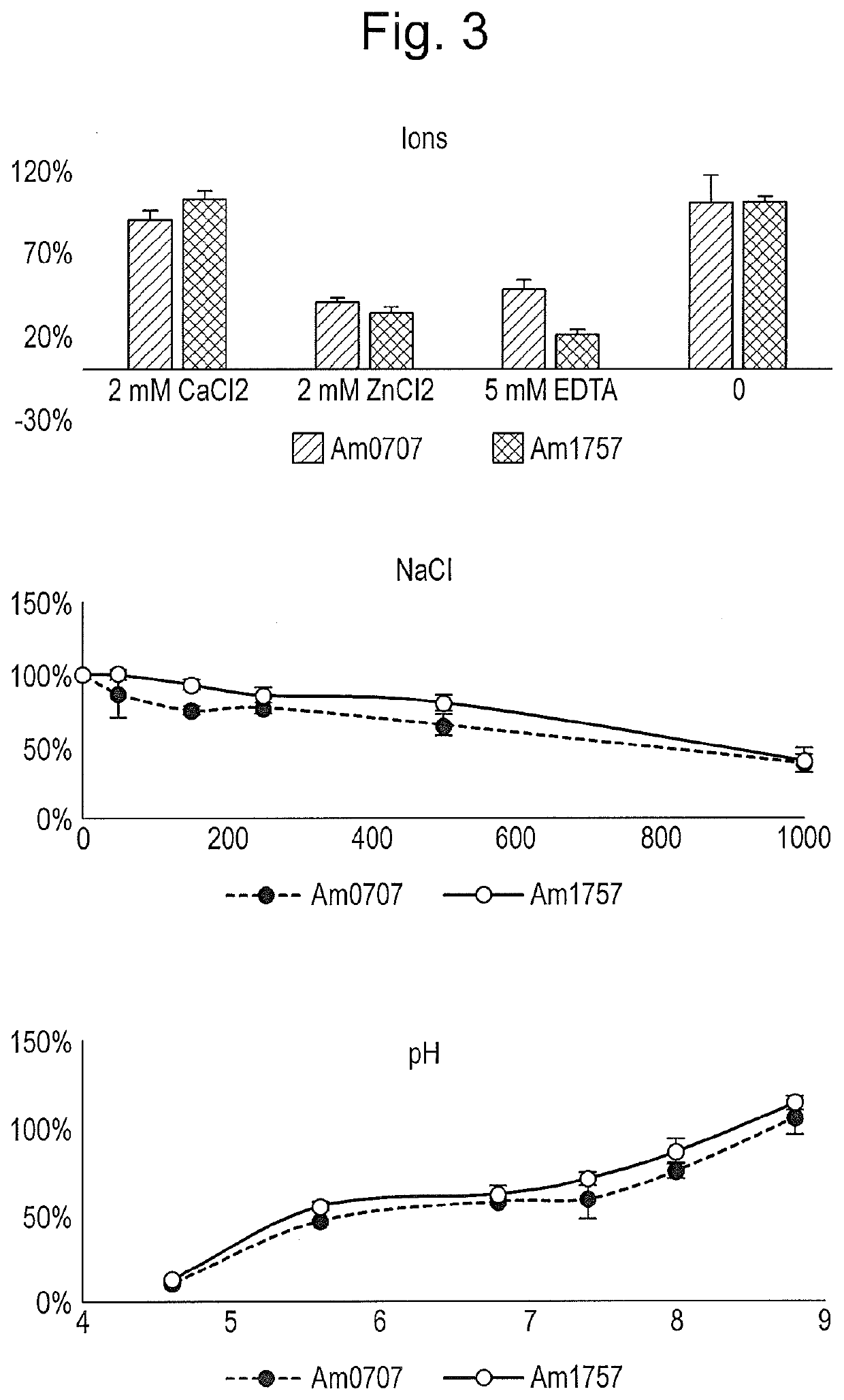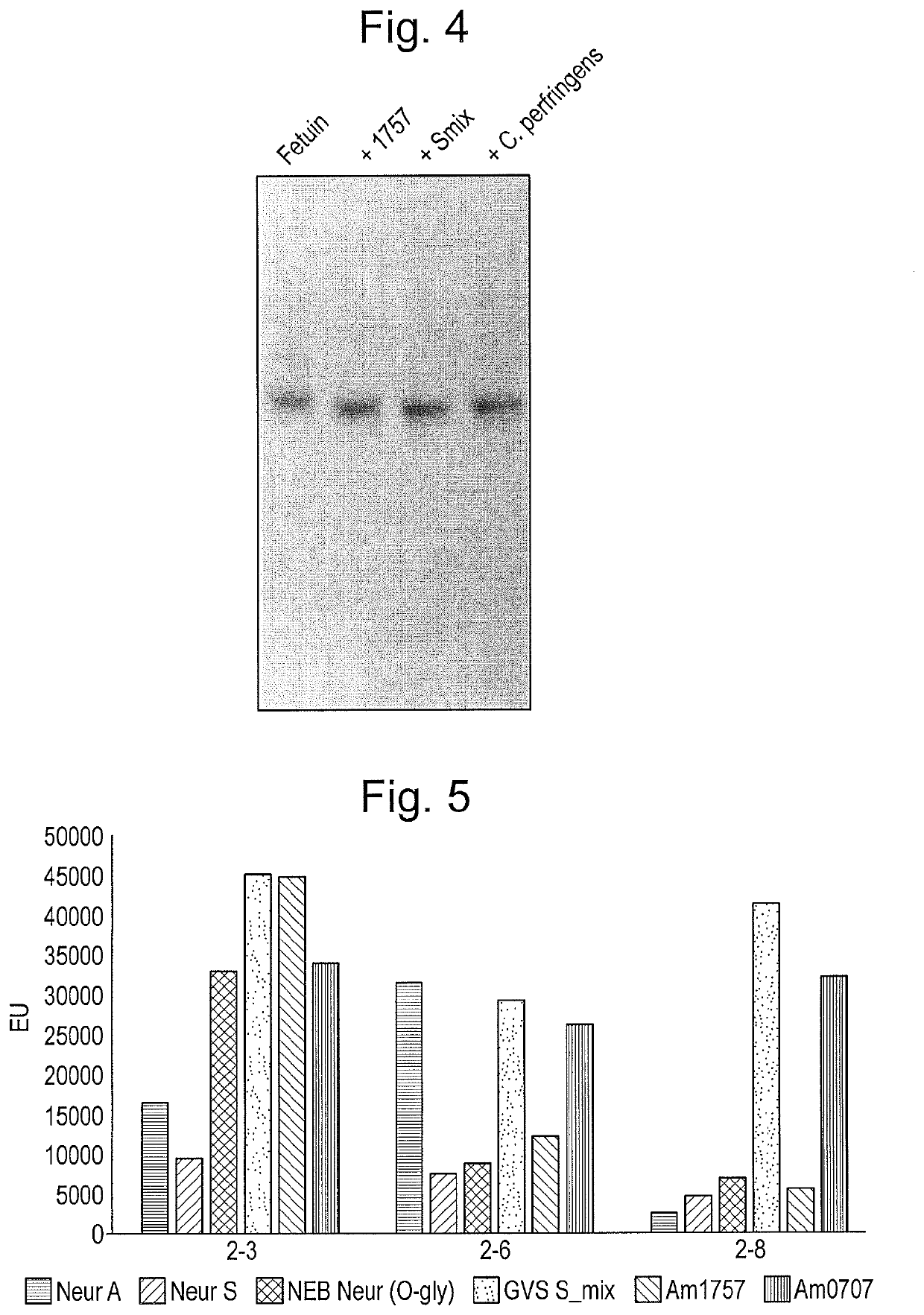Enzymes for Glycan Analysis
a technology of enzymes and glycans, applied in the field of enzymes for glycan analysis, can solve the problems of general negatively charged, difficult to study glycoproteins, and complicating mass spectrometry analysis
- Summary
- Abstract
- Description
- Claims
- Application Information
AI Technical Summary
Benefits of technology
Problems solved by technology
Method used
Image
Examples
example 1
s
Materials & Methods
Expression and Purification of Sialidases
[0109]Genes (Am0705, Am0707, Am1757, Am2058) identified in Akkermansia muciniphila were codon-optimized to express well in E. coli in the vector pET21a(+). The vector was transformed into BL21(DE3) Star cells. E. coli was routinely cultured in LB at 37° C., 200 rpm. In the presence of the plasmid, 100 μg / mL ampicillin was added. After o / n incubation, cultures were diluted 1:20 in fresh LB(amp), and grown until OD620 ˜0.7-0.8, after which recombinant protein expression was induced by addition of 1 mM IPTG, and the expression continued for 5 hours before the cells were collected and frozen. Frozen cells were thawed and resolved in His binding buffer (20 mM NaP pH 7.4, 500 mM NaCl, 20 mM imidazole), and sonicated for release of intracellular proteins. Cell debris was removed by centrifugation. Sterile filtered supernatant was affinity purified on a nickel column, and re-buffered to 20 mM Tris-HCl pH 8.0 on a PD-25 column. Con...
example 2
des
Materials and Methods
Expression and Purification of an Endo-O-Glycosidase
[0125]The Streptococcus oralis endo-N-acetyl-galactosaminidase was codon-optimized to express well in E. coli in the vector pET21a(+). The vector was transformed into BL21(DE3) Star cells. E. coli was routinely cultured in LB at 37° C., 200 rpm. In the presence of the plasmid, 100 μg / mL ampicillin was added. After overnight incubation, cultures were diluted 1:20 in fresh LB(amp), and grown until OD620 ˜0.7-0.8, after which recombinant protein expression was induced by addition of 1 mM IPTG, and the expression continued for 5 hours before the cells were collected and frozen. Frozen cells were thawed and resolved in His binding buffer (20 mM NaP pH 7.4, 500 mM NaCl, 20 mM imidazole), and sonicated for release of intracellular proteins. Cell debris was removed by centrifugation. Sterile filtered supernatant was affinity purified on a nickel column, and re-buffered in PBS on a PD-25 column. The concentration of ...
example 3
otein Specific Endoprotease
[0142]We recently determined that endoprotease activity of the polypeptide consisting of SEQ ID NO: 12 at least in part relied on specific sialic acid bonds, necessitating the removal of both 2-3 and 2-6 linked sialic acids for full effect. To determine the individual role of specific sialic acid bonds for the endoprotease activity, we incubated Etanercept with different sialidases in combination with the endoprotease for 30 min-20 h. Removal of 2-3 bonds seemed sufficient to enhance endoprotease activity (FIG. 19). Sialidsases used were (1) Am0707=polypeptide of SEQ ID NO: 3; (2) Am1757=polypeptide of SEQ ID NO: 6; Mix=1:1 combination of (1) and (2).
SequencesSEQ ID NO: 1 - sialidase, Am0707 - wildtype (signal sequence underlined)MTWLLCGRGKWNKVKRMMNSVFKCLMSAVCAVALPAFGQEEKTGFPTDRAVTVFSAGEGNPYASIRIPALLSIGKGQLLAFAEGRYKNTDQGENDIIMSVSKNGGKTWSRPRAIAKAHGATFNNPCPVYDAKTRTVTVVFQRYPAGVKERQPNIPDGWDDEKCIRNFMIQSRNGGSSWTKPQEITKTTKRPSGVDIMASGPNAGTQLKSGAHKGRLVIPMNEGPFGKWVI...
PUM
| Property | Measurement | Unit |
|---|---|---|
| pH | aaaaa | aaaaa |
| pH | aaaaa | aaaaa |
| temperature | aaaaa | aaaaa |
Abstract
Description
Claims
Application Information
 Login to View More
Login to View More - R&D
- Intellectual Property
- Life Sciences
- Materials
- Tech Scout
- Unparalleled Data Quality
- Higher Quality Content
- 60% Fewer Hallucinations
Browse by: Latest US Patents, China's latest patents, Technical Efficacy Thesaurus, Application Domain, Technology Topic, Popular Technical Reports.
© 2025 PatSnap. All rights reserved.Legal|Privacy policy|Modern Slavery Act Transparency Statement|Sitemap|About US| Contact US: help@patsnap.com



